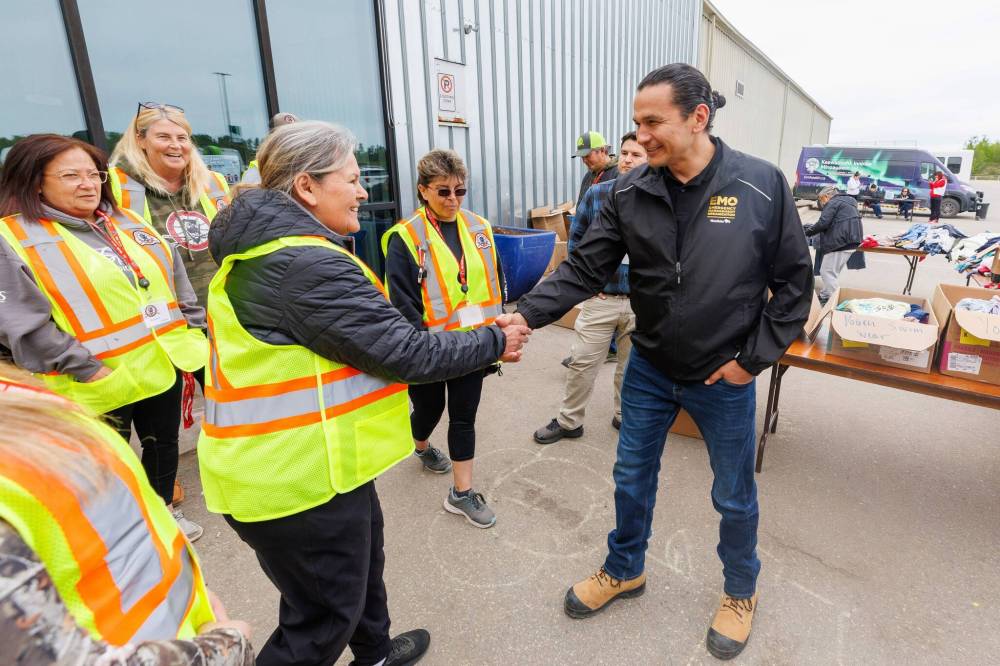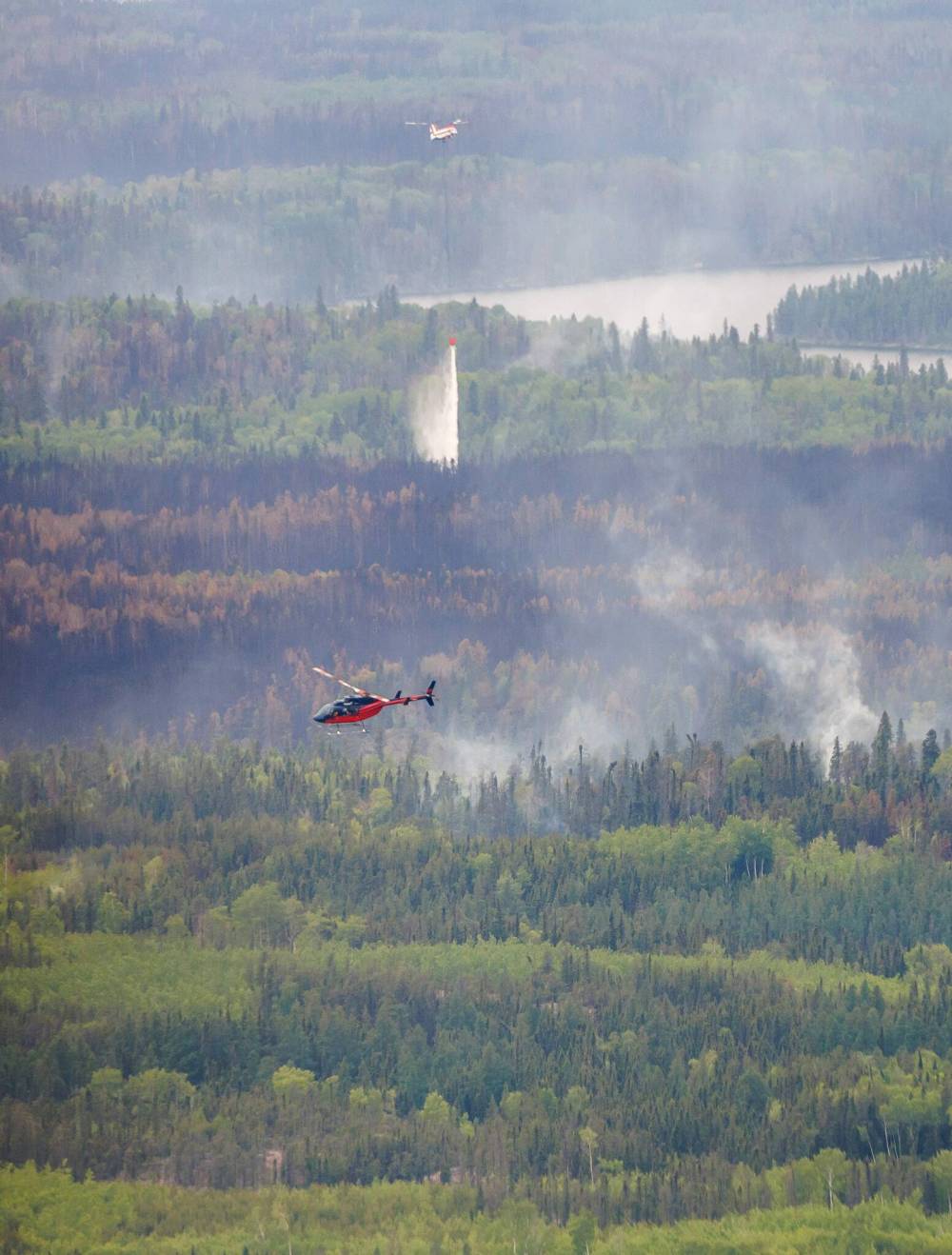Fire risk rises with warmer days ahead
Advertisement
Read this article for free:
or
Already have an account? Log in here »
We need your support!
Local journalism needs your support!
As we navigate through unprecedented times, our journalists are working harder than ever to bring you the latest local updates to keep you safe and informed.
Now, more than ever, we need your support.
Starting at $15.99 plus taxes every four weeks you can access your Brandon Sun online and full access to all content as it appears on our website.
Subscribe Nowor call circulation directly at (204) 727-0527.
Your pledge helps to ensure we provide the news that matters most to your community!
To continue reading, please subscribe:
Add Brandon Sun access to your Free Press subscription for only an additional
$1 for the first 4 weeks*
*Your next subscription payment will increase by $1.00 and you will be charged $20.00 plus GST for four weeks. After four weeks, your payment will increase to $24.00 plus GST every four weeks.
Read unlimited articles for free today:
or
Already have an account? Log in here »
WINNIPEG — Manitoba officials are warning things are likely to get worse before they get better, as federal data predicts Canada will see its second-worst wildfire season on record.
Natural Resources Minister Ian Bushie cautioned that while recent rain brought some relief to fire-hit areas in Manitoba, there remains a long way to go.
“We’re not out of the wildfire season yet. Actually, I would almost hazard to say we’re not even in the height of our wildfire season yet,” Bushie said during a news conference Thursday afternoon.

Premier Wab Kinew meets with staff outside the evacuation centre at the Thompson Regional Community Centre in Thompson. (Photos by Mike Deal/Winnipeg Free Press)
Canada’s wildfire season — the second worst on record since 2023 — has seen 3.7 million hectares of land burn, six times the area of Prince Edward Island, Public Safety Canada said in a technical briefing Thursday.
The 10-year average is about 800,000 hectares.
After a brief period of cooler temperatures, the fire risk has returned across much of the province, said Kristin Hayward, assistant deputy minister of the Manitoba Wildfire Service.
As of Thursday afternoon, there were 21 active wildfires in Manitoba, with five considered out of control. There have been 116 fires to date, up from the annual average of 107 fires.
Hayward said as other provinces face similar fire threats and eventually begin sending personnel back home, Manitoba will look to augment its resources — including using civil servants — to fill roles to take some pressure off existing crews.
“We do have to be mindful of how we’re utilizing the resources,” she said.
The province currently has 229 firefighters from out of province, including those from the U.S., helping Manitoba crews.
There have not been any new fires in the last 24 hours, and no significant growth has been seen in any of the blazes recently, Hayward said.
The 5,000-hectare fire burning in Whiteshell Provincial Park and across the border into Ontario has been upgraded from out of control to being held, which means officials don’t believe the fire will spread further.
Residents from the community of Cranberry Portage were given the green light to go home beginning Saturday at 8 a.m., while planning is underway for evacuees to eventually return to Pimicikamak Cree Nation.
Pimicikamak (Cross Lake) incident commander David Finch said Wednesday fire crews are planning controlled burns to clean up vegetation around the community, and the Manitoba Fire Service predicts the blaze will slow in growth over the next 10 to 12 days.
The fire near the community was measured at 58,800 hectares at last count and remains out of control.
No return date has been set for evacuees.
Hayward said the province realizes evacuees are keen to return home, but safety is the first priority.
“We want to be confident that we have really good containment before we’re allowing folks back,” she said.
“I know on the ground, it can look like the situation is really improving over the last little while, but as we look ahead at the weather that’s coming, we want to be really certain that we have a good handle on things before people repatriate.”
It is up to local authorities to lift evacuation orders, Hayward said.
Meanwhile, the chief of a remote northern First Nation says he’s sending evacuees home to their smoke-filled community because they’re receiving abysmal treatment in Winnipeg and no help from the provincial or federal governments.
“We’ve just decided our people are going through too much here. We never got a response from the government,” York Factory First Nation Chief Darryl Wastesicoot said.
Wastesicoot said evacuees who were flown to Winnipeg have been moved between different hotels, haven’t received timely meals and feel unsafe in their accommodations.
About 70 York Factory residents with medical conditions were flown to Winnipeg under a voluntary evacuation order on June 2 to escape heavy wildfire smoke from a nearby blaze.
The chief said many residents were placed in downtown hotels that were not family-friendly.
“The food in one hotel was bad. They didn’t cater to a lot of our members in terms of getting out food in a timely manner … this is a state of emergency, and our people have to keep moving,” he said.

The view of wildfire conditions around Flin Flon from a helicopter during Kinew’s tour of northern Manitoba hot spots.
The chief said he was working with the Canadian Red Cross to secure charter airplanes to send evacuees home beginning Thursday.
Wastesicoot said he reached out to the province and Indigenous Services Canada about the concerns but received no word back.
“We just decided we’re just going home,” he said.
Also on Thursday, Premier Wab Kinew got a firsthand look at the battle against the largest wildfire in the province during a tour of northern Manitoba.
“Just know that it’s been a long go for the people here,” Landon Shepherd, wildfire incident commander of Jasper National Park, told Kinew as they met at the Flin Flon command centre.
“We’re happy to be helping out Manitoba Wildfire (staff), and it’s great to see people that come together and work so well (together).
“The scale of these events now, (as) we learned in Jasper … makes it even tougher for logistics and bringing people in. You need to bring all the different weapons to bear, especially as a lot of these (wildfires) are focused around communities, not just out on the wildland. It’s trickier,” he said.
In July 2024, a wildfire raged out of control in Jasper National Park, in northern Alberta, forcing the evacuation of 25,000 people. The flames destroyed about 350 structures. The evacuation lasted until mid-August and the fire wasn’t declared under control until Sept. 7.
Flin Flon, which is home to 5,000 people, was evacuated in late May due to the advancing wildfire. The blaze has grown to more than 307,000 hectares — roughly seven times the size of Winnipeg — and remains out of control.
A mandatory evacuation order remains in place. On May 28, Flin Flon residents were given a few hours to grab personal items and get out.
Flin Flon fire Chief Jason Kuras told the premier the past few weeks have been intense.
“We were really lucky that we had an outpouring of support from all the municipalities that brought us trucks at the right time, that we were able to cut off the key areas that we needed to,” Kuras said. “It’s been amazing. It’s worked out really well.”
Kuras said his team had been battling fires in The Pas and Opaskwayak Cree Nation before the threat escalated in Flin Flon.
“As soon as there was even a sniff that we might need some help, it was boom, OCN sent up a unit within hours, The Pas sent up a unit within hours,” he said. “We’re distance aways but we’re all so close. It was great to see that.”
Kuras praised the results emergency crews achieved despite limited resources.
Kinew acknowledged that the province must learn a lesson from this year’s horrible wildfire season.
“You gotta plan,” the premier said. “Let’s have that conversation once things calm down a bit.”
The premier’s next stop on the wildfire tour was Thompson, where he met with the mayor, MLA, and councillors. He visited a shelter to talk to evacuees, and then the Thompson hospital to meet with staff before flying back to Winnipeg.
» Winnipeg Free Press, with files from The Canadian Press
